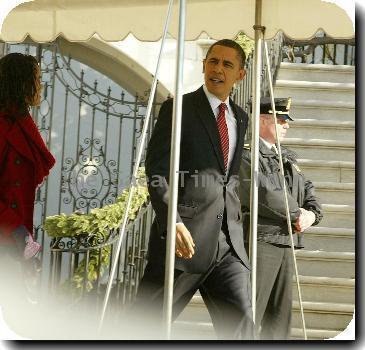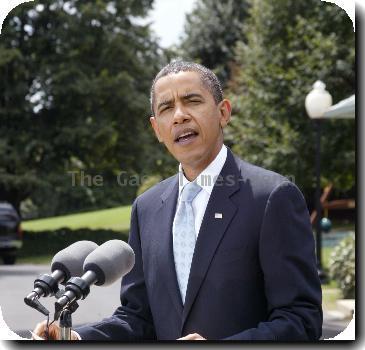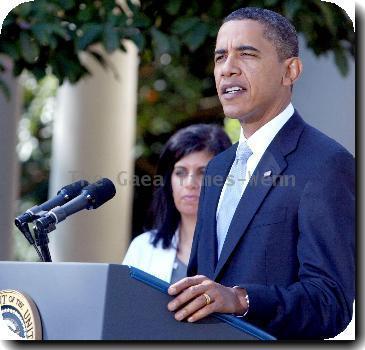US troop deaths in Afghanistan soar in 2009 as insurgents deploy thousands of homemade bombs
By Jim Heintz, APThursday, December 31, 2009
US troop deaths soared in Afghanistan in 2009
KABUL — U.S. military deaths in Afghanistan doubled in 2009 compared with a year ago as 30,000 additional troops began pouring in for a stepped-up offensive and the Taliban fought back with powerful improvised bombs.
A tally by The Associated Press shows 304 American service members had died as of Dec. 30, up from 151 in 2008. The count does not include eight U.S. civilians killed by a suicide bomber on a base in eastern Afghanistan on Wednesday.
Also, the annual death toll of international troops, including U.S. forces, surpassed 500 for the first time in the war. The total this year was 502 compared with 286 in 2008, according to the AP count.
Among other forces, Britain took the worst blow in 2009 with 107 deaths and Canada lost 32, including four who died Wednesday when their vehicle was blown up by a roadside bomb. Other countries in the international military operation lost a total of 59 service members.
U.S. military officials acknowledge that the insurgency has the momentum and that more troops on the battlefield means the death toll is likely to remain high in the near term. Another 30,000 reinforcements are due in coming months, raising the American presence to 100,000.
In contrast, U.S. deaths in Iraq dropped by half as troops largely remained on bases and the United States prepares to withdraw from that country by the end of 2011. There, 152 American service members died, down from 314 a year earlier, according to figures compiled by the AP from U.S. Defense Department information.
The sharply rising death toll in Afghanistan was an obstacle for President Barack Obama as he decided in November to send more forces to the war, which is increasingly unpopular in both America and Europe.
Afghan civilian deaths are more difficult to track, but according to the United Nations mission in Afghanistan, 2,021 were killed in the first 10 months of the year, nearly 1,400 of them by insurgents and 465 by U.S. and other pro-government forces.
Over the past eight years, at least 933 U.S. service members have died in the military campaign that was launched in the wake of the Sept. 11, 2001, attacks, according to U.S. Defense Department figures that include deaths in Pakistan, Uzbekistan and support operations elsewhere.
As the second surge gets under way, the potential carnage troops face from improvised explosive devices, or IEDs, is a major worry.
The AP count, based on daily reports from NATO’s International Security Assistance Force, found that 129 of the U.S. fatalities in 2009 — or more than 40 percent — were caused by IEDs. The homemade bombs are hidden along the roadside or near buildings and detonated by remote control or triggered when troops cross simple pressure plates.
The Taliban were slower than Iraqi insurgents to adopt IEDs, but they now appear to be the weapon of choice against the Americans’ superior artillery and armored vehicles, said a senior intelligence official with the international force. He spoke on condition of anonymity because of the sensitivity of the issue.
There were more than 7,000 IED incidents in 2009 — including explosions, the discovery and defusing of the bombs or civilians turning them in — compared to just 81 in 2003, the official said.
He estimated that more than three-quarters of all American deaths and injuries in Afghanistan were due to the improvised explosives.
IEDs also take a harsh toll on civilians. In the last four months of the year, 117 were killed by the devices, either deliberately or inadvertently, including 30 who died when a bus ran over an IED in September.
Although the U.S. Defense Department established a body in 2006 to oversee anti-IED efforts, a report by the Government Accountability Office in October criticized it for lacking “full visibility and coordination.”
The Defense Department’s top weapons-buyer, Ashton Carter, told reporters in November that the United States was “just beginning to get set” in developing a full-scale strategy against the bombs.
Defense Secretary Robert Gates announced in November that a new task force on the matter was being formed.
One initiative under way is shipping a more maneuverable version of the heavily armored vehicles known as MRAPs — Mine Resistant Ambush Protected — to Afghanistan. Although these can withstand blasts better than other military vehicles such as Humvees and Strykers, the Taliban are responding by building bigger IEDs.
The intelligence official said that 18 months ago, the explosive charges typically weighed about 25 pounds (11 kilograms), but charge weights in some recent cases have been upward of 1,000 pounds (450 kilograms) — enough to destroy an MRAP.
The declining U.S. military fatalities in Iraq reflect how the country, once almost consumed by violence, has become safer as sectarian violence has decreased. Also, the American role in the conflict has shrunk. Under a U.S.-Iraq security pact, American combat troops pulled back from Iraqi cities on June 30, as part of a plan to have all U.S. forces out of the country by the end of 2011.
Loren Thompson, a defense analyst with the Lexington Institute, said the question now is whether the security gains are permanent or whether insurgents are simply biding their time until American forces leave in order to resume the conflict.
Associated Press Writers Rahim Faiez and Deb Riechmann in Kabul and Rebecca Santana in Baghdad and researcher Monika Mathur in New York contributed to this report.
Tags: Afghanistan, Asia, Barack Obama, Central Asia, Improvised Explosives, Iraq, Kabul, Middle East, North America, United States, War Casualties



